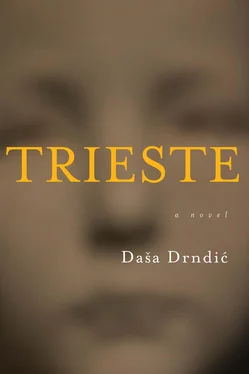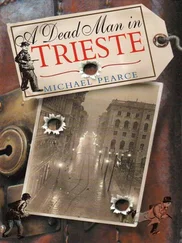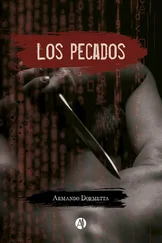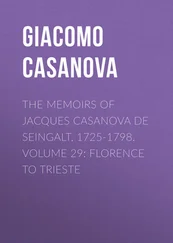Then the Lebensborn home in Trysil, then
the Hurdalsverk, opened in 1942, with 40 beds for mothers and 80 beds for children.
The Klekken opened in 1942.
Heim Bergen in the town of Hop near Bergen opened in 1943.
Kinderheim Stalheim opened in 1943, could accommodate one hundred children.
I lived at Stalheim. When the war ended they returned me to my mother, who didn’t want me. My mother sent me to a home. I sat in a doctor’s office with six doctors who confirmed I was mentally retarded and that I must never have children. Two staff members from the social welfare centre abused me with oral sex and told me this was obligatory therapy. I was five. I spent twelve years in the Merchant Marines. In 19961 had a nervous breakdown. My wife left me. I spent a year being treated for manic depression at a psychiatric clinic. My mother died in 1988. I found my German father in 1997 and in 1998 he, too, died. I am sixty-five. I am an empty man. My name is Karl Otto Zinken.
Stadtheim Oslo in downtown Oslo opened in 1943. That same year, another state home opened in Trondheim.
I was born at the Trondheim home. My mother was one of the 14,000 who got pregnant with an S.S. man, one of the 5,000 women who were sent to work camps after the war, and before that their hair was cut on the main square in Tro ndheim. I was one of the 12,000 children who posed a threat to Norwegian society. When I turned two they gave me to a family for care and the family kept me chained in the yard with their dog. When I turned six a man threw me into a river, shouting, Let’s see if the witch sinks! When I was ten, drunken villagers from Bursur near Trondheim branded my forehead with the shape of a swastika using bent nails, and howled, Now we will rape you! I was saved by a woman. Afterwards, I used sandpaper to rub at the swastika on my forehead to remove it. When I turned thirty I wrote a book called The German Child. Then I found my mother.
Then, Heim Os near Bergen
My mother’s name was Synni Lyngstad. My mother fell in love with Alfred Haase, a married S.S. sergeant. During World War Two, from 1940 on, once Norway had been occupied, there were about 350,000 German soldiers roaming around Norway. My mother was eighteen when she fell in love with S.S. Sergeant Alfred Haase. I was born in Ballangen, near Narvik, on 15 November, 1945, a bastard. In early 1946 my mother, grandmother and I moved to the little town of Eskilstuna in Sweden. We were safe there: no-one knew of my mother’s past. At Eskilstuna in Sweden no-one would say to my mother after the war, You are a Tyskerhor. You are a German whore, a traitor of Norway. No-one shaved my mother’s head in Sweden, nor did they send her to a work camp. They did not consign me to an orphanage or a mental hospital, nor did they ship me off to Germany or overseas to get rid of me. We were safe in Sweden. Sweden knew who we were, but kept quiet. That was the agreement between Norway and Sweden, that Sweden would keep quiet. Sweden agreed to receive several hundred children like me, several hundred half-German, traitorous children who are sixty-year-old Swedes today. My mother Synni died in 1948 of kidney disease, and for thirty years I believed that my father had been killed at the end of the war on his way back to Germany from Norway. That is what my grandmother told me, Your father is dead, she’d say whenever I asked. Then in 1977 a German magazine published a story about my background and claimed that former S.S. Sergeant Alfred Haase was alive. So I found my father, who came to Sweden to meet me. It was difficult to talk with him. He was an elderly S.S. man and a retired pastry chef. I don’t believe he was a war criminal; he was never taken to court. The two of us are physically similar and this disturbs me. My name is Anni-Frid Lyngstad. I was a singer in ABBA. The brunette.
My uncle breeds dogs, so he trained me as if I were a dog. My aunt recently said to me, I won’t leave you anything when I die, because you are an S.S. bastard. I am sixty-three.
For fifty years they were putting us down. For fifty years what happened to us had been a taboo. Nothing was said about us until 1990. We didn’t exist. But our dossiers are still open. In them crouch ruined lives. We, the children of Lebensborn, are already old. Many of us will never learn who we are. We started searching too late. They doused me with scalding water at the orphanage. This is how filthy German children are washed, they said. A teacher abused me sexually. A priest said, I recommend sterilization.
I changed orphanages twenty times. They locked me in a pantry because I “stank”. They scrubbed me with ammonia; the older boys raped me; the teacher pretended not to see what was happening. They force-fed us swill until we vomited, and then made us eat the vomit. The Ministry of Defence and the C.I.A. took some of us for experimentation with L.S.D. Four of the children died, six killed themselves. One boy was raped by nine men, and afterwards all nine of them urinated on him “to wash away the S.S. disgrace”. For sixty years they called us Tyskerbarna, German bastards. We sued the Norwegian government. Then the Norwegian government apologized in 2001 to the “German bastards”. We have barristers helping us obtain compensation, which, I hear, will be $3,000.
At all Lebensborn homes the files with information about the mothers and their children were closely guarded under lock and password, and this information is not entered into the municipal or Church records. But something somewhere fell flat. Despite Himmler’s generosity, only about 8,000 babies were born throughout the war as part of the initial Lebensborn project. New solutions had to be devised.
Apart from the German children born there, children collected by Himmler’s activists from orphanages throughout the Third Reich are also placed in Lebensborn homes where they are trained, brainwashed, fed with Nazi stories about the greatness of the German nation, about the need to bow down to Adolf the god, and once they are prepared, shaped, turned into marionettes, they are sent to ideologically acceptable adoptive families. Decades after the war had ended these children still did not know what happened to them, what Himmler’s officials did, especially the children in what was then East Germany, who also had no inkling that their parents were not their parents. There were many such children, thousands. Some learned only forty years later about Hitler’s and Himmler’s top secret pro-Aryan Kinder -swindle, while some do not know even to this day, because the Communist authorities held this little truth, meaningless to them, this piddling episode of historical reality, in such secrecy. The secret archives with information about the birth of the Lebensborn children, with information about those put up for adoption, the files listing the changed names, are shunted during the war from one centre to another, and after the war many of these files are destroyed, some intentionally, some not. When the Allies start milling around Germany in the spring of 1945, the staff burn records and abandon most of the Lebensborn homes in panic. And so it is that the identities of thousands and thousands of people disappear forever in flames, which still does not mean that these people did not exist and that they don’t have other interesting, alternative, replaceable identities, as do I. At the end of the war, registers surface in Steinhöring with detailed information on 2,000 children stolen, adopted, displaced in orphanages, while the Federal Archive in Berlin makes public in 1999 that they have come upon a set of files with information about an additional 7,000 children, which profoundly disturbs the lives of some of these former children, who decide to dig through the files and through their genes. In the information at Steinhöring there is no mention of me.
Читать дальше












